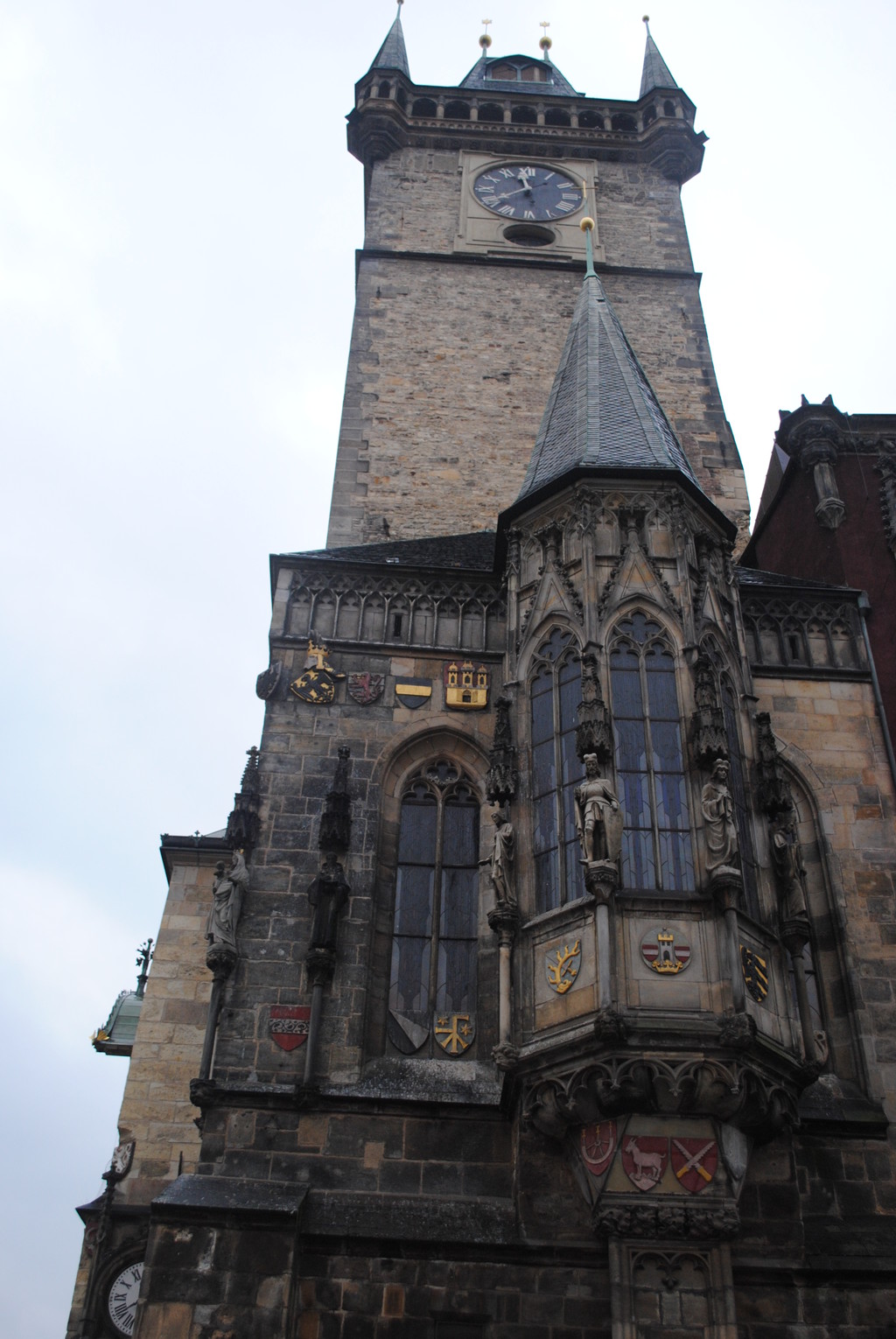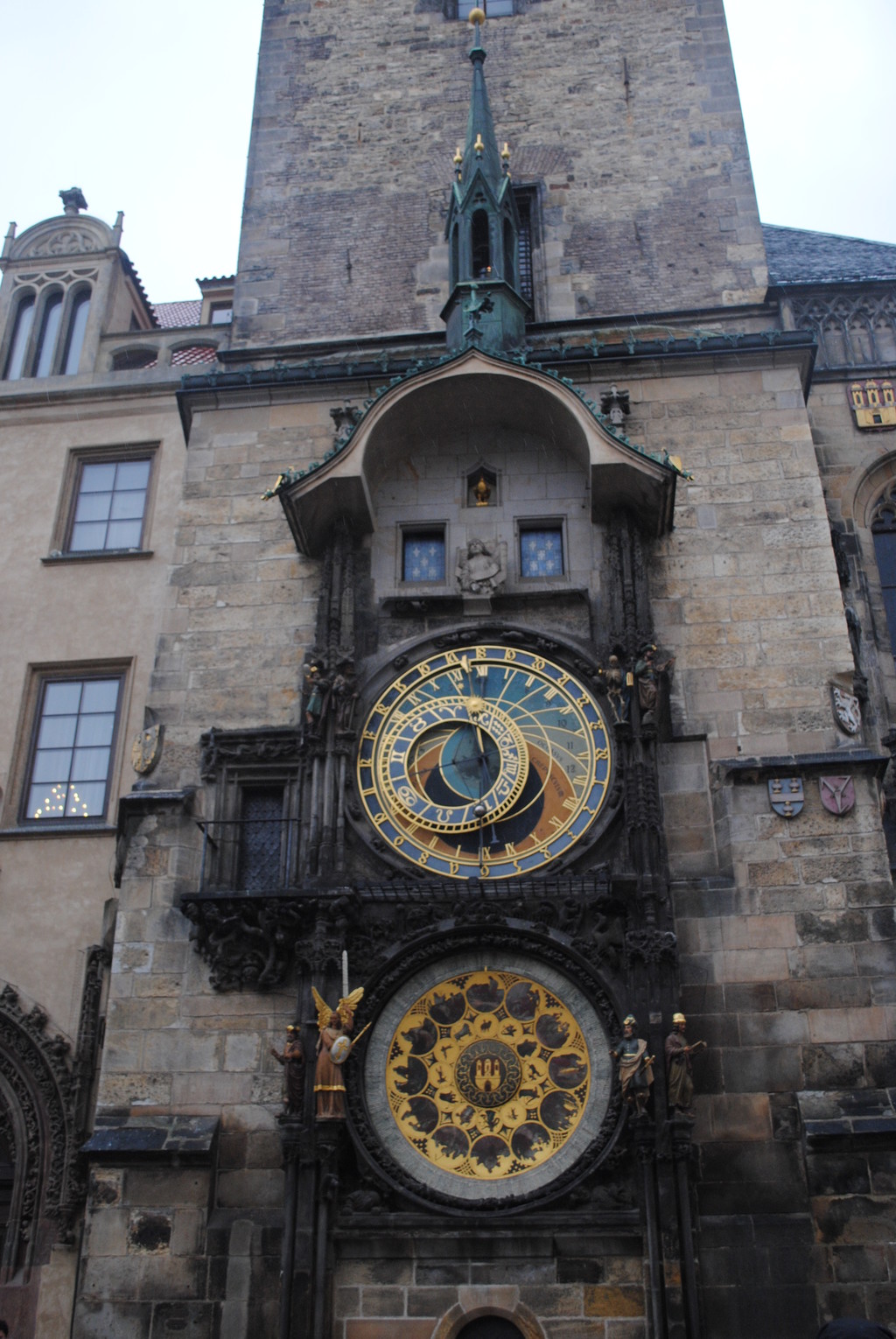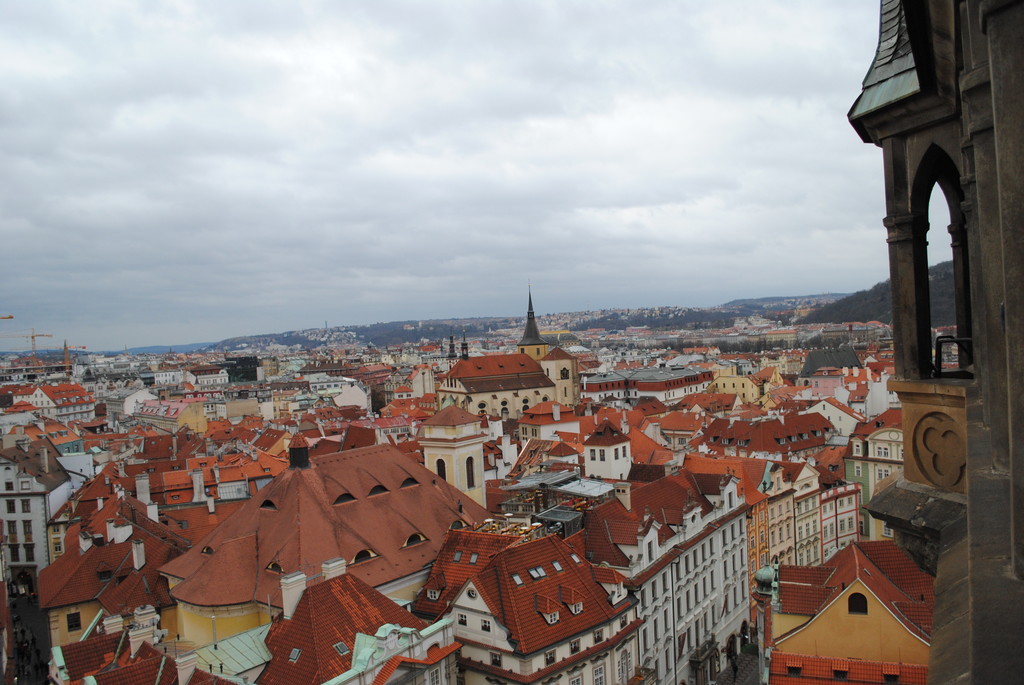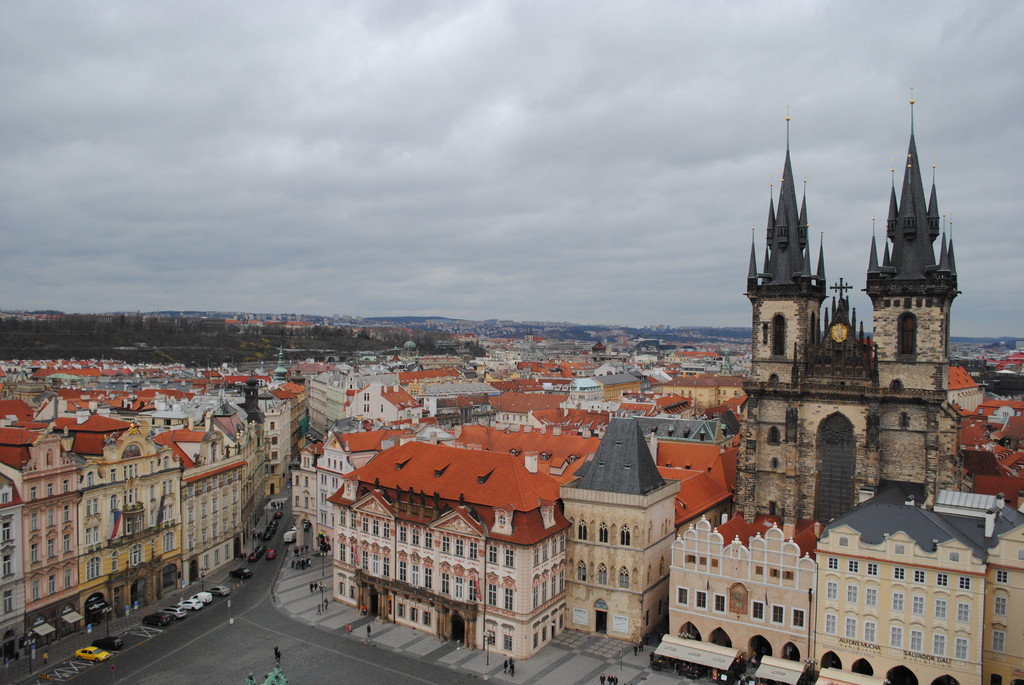Prague Astronomical Clock - The Orloj
The Prague Astronomical Clock (also known as the Orloj) is located in the large square in the so-called Old Town, on one of the walls of the Old Town Hall tower. I am going to talk to you about it for two reasons: the first, for the medieval astronomical clock that it has; and the second, for the incomparable views of Prague that you will have if you climb to the top.

The Prague Astronomical Clock is one of the most visited tourist attractions in the Czech capital.
The Orloj dates back to the fifteenth century, although in successive centuries, more parts of the mechanism have been added and have also been repaired on many an occasion, especially at the end of the Second World War, due to the extensive damage that it suffered. During both the fifteenth and sixteenth centuries, several astronomical clocks were built, and I have been lucky enough to visit both this one here in Prague and another in Strasbourg (France), which are two of the most famous examples in the world.
This astronomical clock, just like others, consists of three important parts: the astronomical dial, the animated figures, and the calendar.

The astronomical dial has the shape of an astrolabe, and indicts the 24 hours of the day in the black circular border (it would be just like a real clock, but instead of having the numbers 1 to 12 on it, they go from 1 to 24), whereas, on the interior borders, it indicates the time in a different way. On the other hand, as its name suggests, it indicates several astronomical happenings, like the positions of the sun and the moon. With the hands that it has, on one side, you could see the golden sun that ended up in a golden hand, and this is what indicates the local time in Prague. Whereas, according to which of the other parts that you look at, you will see the time in a different format (but I wouldn't really know how to explain it properly, I just remember the golden hand). The moon, obviously, would be the silver circle on the other little hand. In the interior, you can also see another smaller black circle that reflects the Zodiac signs and the constellations. I don't really understand astronomy, but I would like to one day because I find it very interesting. Even still, the dial is a work of art in my eyes, just as much for the mechanism as for its beauty.
Another important part of the Orloj is the animated figures that it has.
On one side, you have to distinguish between the twelve Apostles, which move in a circular motion around the inside of the clock, and appear in twos in the two windows that sit in the upper part of it. This is known as "The Walk of the Apostles" (in Strasbourg, there is also one of these, but it has a different mechanism).
There are four of the other important animated figures, two on either side of the astronomical dial. These figures represent (from left to right): vanity, greed, death and lust. The figure of vanity is represented by a man with a mirror in his hand; the figure of greed is represented by a miser with a bag of gold; death is symbolised by a skeleton; and, finally, lust is portrayed by a man with an instrument in his hand (I wouldn't know what to say it is).
Finally, the inner part corresponds to the calendar, which was added during the nineteenth century, and is like another circle that is equal or very, very similar in size to the astronomical dial. In the interior, there are twelve drawings that represent the twelve months of the year. On each side of the calendar, there are two figures, which, from left to right, are: a philosopher, an angel, an astronomer, and a chronicler.
With all of this information, you will better understand how the astronomical clock operates and, as a result, you will enjoy your visit much more; particularly if you are only coming to see how it moves. I am telling you this from experience, as, although I loved it, I didn't understand much when I saw it. So, as it had seemed very interesting, I decided to better inform myself after seeing how it works.
The clock operates every hour on the dot, but most people usually go to see it at 12 midday. Seeing the astronomical clock is free to do, as, unlike the clock in Strasbourg that is situated inside the cathedral and requires you to pay a fee to see it, this one is placed on an exterior wall of the Old Town Hall.
Now, I am going to briefly talk to you about the tower and how you can make your way up to the top of it.
The Orloj is of a Gothic style and has a height of approximately 60 metres. I love its roof, which has a pointed top and is quite large and dark in colour - it seems very medieval in my eyes.
I was in Prague for two days. On the first day, I went directly to see the clock at midday and I heard shouting and applause from the upper part of the tower, and that is when I found out that you could go up there, but as I didn't have the time, I didn't do so. The following day, I went back again with a friend and we went up to the top of the tower. We had to basically run there because we wanted to celebrate the turning of the hour, and we arrived just in time to applaud it. What pleasantly surprised us, though, were the views that we could enjoy. Without a shadow of a doubt, the views of the Old Town Square fascinated me: you can see the Church of Our Lady before Týn perfectly (one of my favourite buildings in Prague), as well as the city's outskirts. I really recommend going up to the top, as Prague is such a beautiful city; you have to see it from every angle possible, and thanks to the 60 metre-tall tower (there are no skyscrapers here), you can admire this impressive medieval city for yourselves.

Climbing up the clock tower does indeed come at a cost: for both children and students, it costs 40 Kč, and for adults, 60 Kč. To give you an idea, 40 Kč works out at roughly €1. 55, and 60 Kč is around €2. 33. These prices are really cheap and very reasonable when you consider what is awaiting you at the top of the tower.

The opening hours to climb up the clock tower are from 9am to 6pm, Tuesday to Sunday, and 11am to 6pm on Monday. Even so, I would check the times on their website before going, just to be on the safe side.
Photo gallery
Content available in other languages
- Español: La torre del reloj de Praga
- Italiano: La Torre dell'Orologio di Praga
Rate and comment about this place!
Do you know Prague Astronomical Clock - The Orloj? Share your opinion about this place.



















